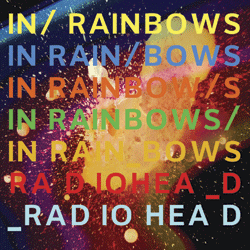
Changing places: a new role for creators in the digital world
By María Alejandra López García, freelance IP legal specialist, Caracas, Venezuela, and Rodolfo Carlos Rivas Rea, IP legal specialist currently working on WTO-related issues in Geneva, Switzerland.
With the invention of printing in the 15th century the book trade took off, giving birth to copyright as a means of regulating the "right to copy" literary works under common law, and of ensuring that authors reaped the rewards of their labor. For the next 500 years or so, although tensions between publishers and authors were all too frequent, the industry flourished. The consolidation of the major publishing houses in the late 20th century, however, and the advent of digital technology marked a dramatic shift in the industry. For much of the 20th century major publishers and distributors maintained an iron grip on book markets and distribution channels. Communication between authors and their readers was practically non-existent and, where it did exist, the terms were dictated by publishers. All this changed with the digital revolution, which continues to transform traditional business relationships, fuelling new creative opportunities and breathing new life into the creative economy.

The critically-acclaimed rock band Radiohead was
one of the first to experiment with new ways to interact
with their fan base. In October 2007, the band launched
In Rainbows exclusively via www.radiohead.com as a
download using a pay-what-you-want model.
(Photo: © Radiohead)
The music industry was, perhaps, the first to feel the full force of the digital transformation that signaled a marked shift in power from the record labels towards artists and live performances, on the one hand, and distributors of electronic content, on the other. Record companies were left in an uncomfortable and precarious position with little choice but to reinvent themselves and adapt to the realities of the new digital economy. Other creative sectors have had a softer landing but nonetheless can ill afford to continue with "a business as usual" approach.
To compete effectively in the digital economy, companies need a business plan built around strategic use of intellectual property (IP) that enables them to be nimble and responsive. The lessons of recent years underline the importance of consumer power and have shown that, in general, provided digital content is easy to access and reasonably priced, consumers are willing to pay for it. While some recording companies and publishers have been reluctant to break with established business models, certain creators have sought alternative ways to interact with their fan base and secure a return on their creative works.
Radiohead makes waves
In the music world, the critically-acclaimed rock band Radiohead was one of the first to venture into new territory. At the end of their contract with EMI/Capitol, Radiohead launched In Rainbows, in October 2007, exclusively via www.radiohead.com as a download using a pay-what-you-want model. The album was released as a standard CD later that year. Although precise figures are unknown, the album is thought to have sold over 3 million copies (in all formats). Radiohead claims it earned them more than their previous album recorded on the EMI/Capitol label, in spite of the fact that, as confirmed by the band, more people downloaded the album free of charge than opted to pay for it.
Stephen King: e-book pioneer
In the book world, the master storyteller, Stephen King, was the first to test the water with the release in 2000 - through Simon & Schuster, using SoftLock technology - of Riding the Bullet, the first-ever mass consumption e-book. Despite a number of technical glitches, the work was downloaded over half a million times. The novel was later published in print format as part of a collection of stories by the author.
Later that year, undeterred by the problems encountered in releasing Riding the Bullet, Stephen King progressively released individual chapters of The Plant on his personal website. The initiative worked on an honor system, whereby readers agreed to pay a sum of money suggested by the author to download each chapter. According to figures provided by the author, the project generated about half a million US dollars. Ultimately, however, as less than 75 percent of readers settled their pledges, he did not complete the work.
J.K. Rowling and Pottermore
British author J.K. Rowling, of Harry Potter fame, one of the most successful writers of all time, recently took this model to a new level with the launch of her own e-commerce store.
In April 2012, Ms. Rowling publicly unveiled her new Pottermore website introducing a new, independent model for the publication and distribution of Harry Potter-related content. The site offers established fans "a little more of Harry Potter" and promises to inspire a new generation of digital readers. It can be expected to further leverage the value of the Harry Potter brand, currently estimated at around US$15 billion.
The site was developed by Ms. Rowling, TH_NK (a leading British agency in digital strategy) and Sony Corporation and serves as the permanent home for the Harry Potter book collection. By simply registering to acquire a user name, fans embark on a unique and immersive journey into the world of Harry Potter. They can follow the collection's storylines, travel through different parts of the book, share their experiences, demonstrate their creativity and discover a wide range of unpublished content. "For me, this is just a great way to give something back to Harry Potter fans who made the books such an incredible success," Ms. Rowling remarks. "This is a way for Harry Potter to live on in a medium which didn't exist when I started writing the books," she adds.

By retaining the universal rights to digital publication of her works, and
securing ownership of the pottermore.com domain name, J.K. Rowling has
been able to launch her own e-bookstore introducing a new, independent
model for the publication and distribution of Harry Potter-related content.
(Photo: Pottermore.com)
Through the Pottermore Shop, fans can purchase the collection as e-books (for the first time) or as digital audiobooks in multiple languages. The whole e-book series costs US$74.61, and individual e-books range from US$10.36 to US$12.95. On purchasing one digital copy, fans may acquire seven additional copies at no extra cost. Digital editions of the collection are compatible with all e-reading devices, and each download carries a watermark linking the purchaser to the e-book. While digital versions are only available from the Pottermore site, thereby eliminating other online bookseller intermediaries, Ms. Rowling's partners all benefit from cross-platform advertising.
"It is my view that you can't hold back progress; e-books are here to stay," Ms. Rowling noted at the site's launch. "We knew there was a big demand for e-books, but if it was going to be done we wanted it to be more than that... I wanted to pull it back to reading, to the literary experience, the story experience, and this is what emerged. It is a fantastic way for fan creativity to continue," she adds.
Had it not been for Ms. Rowling's foresight - whether by accident or design - in retaining the digital rights in her works, it is unlikely that Pottermore would have seen the light of day. Back in 1996 and 1997, Bloomsbury Publishing (UK) and Scholastic Inc. (US) secured the print publication rights in the Harry Potter collection. Ms. Rowling retained the universal rights to digital publication of her works and, having secured ownership of the pottermore.com domain name through Pottermore Limited, she has been able to launch her own e-bookstore, develop a direct relationship with her readers and retain most of the profits (an estimated 30 percent of sales). Similarly, in 1999 during negotiations with Warner Bros. Entertainment Inc. for the exclusive film rights and trademark rights in the characters, names and other indicia relating to Harry Potter, Ms. Rowling succeeded in retaining an unparalleled degree of artistic control over the adaptation of her works for the big screen.
Ms. Rowling's shrewd stewardship of her works offers a useful lesson to all creators. It underlines the scope for developing new strategic partnerships with traditional industry players, as well as the huge dividends that can accrue to creators from effective and astute management of their IP rights.
Some experiences of unknown creators
While established creators who are, perhaps, better placed to take the risks associated with moving out of the mainstream have enjoyed some success with this model, what about as-yet unknown artists?
American singer-songwriter Frank Ocean started out as a ghostwriter for artists such as Brandy, Justin Bieber and John Legend. In 2010, however, he successfully launched his career with the critically-acclaimed mixtape Nostalgia, ULTRA. Frank Ocean self-released the mixtape free of charge, as he had become frustrated by the inactivity of his record label. After subsequently resolving his differences with his record company, the artist went on to release his debut studio album Channel Orange in July 2012.
Similarly, in the world of literature, the Internet was taken by storm with the launch of the graphic novel, Sullivan's Sluggers, by Mark Andrew Smith and James Stokoe, on the crowd-funding platform Kickstarter. After some experience with traditional publishers, the authors decided to go it alone in order to have full control over their work. "It was a matter of stay put and don't rock the boat or take a risk for once and change everything," Mark Andrew Smith said in an interview with Michael May of Comic Book Resources. They were not wrong. While the authors initially sought to raise US$6,000 to complete their work, the response to their initiative was such that they ultimately generated some US$100,000.
Fifty Shades of Grey by E.L. James is another eye-catching case. Originally inspired by the popular Twilight series and produced as a work of fan fiction, Ms. James wrote the work, initially entitled Masters of the Universe, under the pseudonym Snowqueens Icedragon. Following comments concerning the erotic content of the novel, the author withdrew the work from Twilight's fan fiction pages, changed the title as well as the names of the characters, and published it as an e-book trilogy entitled Fifty Shades of Grey. Print versions of the work were later sold on a print-on-demand basis through The Writers' Coffee Shop and subsequently republished by Vintage Books in April 2012. To date, over 40 million copies (in print and electronic form) have been sold around the world. Universal Pictures and Focus Features recently announced plans to bring the first book of the trilogy to the big screen. Film rights to the work have been sold in 37 countries.
These cases demonstrate a new role for creators in the digitally-primed creative economy and underline the wide-ranging opportunities it presents for both individual creators and other industry players. Such business models will, without doubt, continue to evolve and to inspire others to redefine established business relationships and practices. However, without a clear understanding of the potential economic value of their creative works and an effective strategy to protect and manage their associated IP rights, many creator-driven ventures are unlikely to get off the ground.
The WIPO Magazine is intended to help broaden public understanding of intellectual property and of WIPO’s work, and is not an official document of WIPO. The designations employed and the presentation of material throughout this publication do not imply the expression of any opinion whatsoever on the part of WIPO concerning the legal status of any country, territory or area or of its authorities, or concerning the delimitation of its frontiers or boundaries. This publication is not intended to reflect the views of the Member States or the WIPO Secretariat. The mention of specific companies or products of manufacturers does not imply that they are endorsed or recommended by WIPO in preference to others of a similar nature that are not mentioned.